Retro Replay Review
Gameplay
Slyder’s core mechanic is elegantly simple: tilt the maze using arrow keys or by clicking on-screen buttons, and watch as Slyder, a cheerful blue ball with eyes and a smile, slides in that direction until he collides with a wall or another object. This “ice block” movement paradigm is immediately intuitive yet bristles with hidden complexity. Early mazes ease you in with wide-open corridors and few obstacles, but you’ll soon find yourself juggling multiple moving parts to chart an optimal path.
(HEY YOU!! We hope you enjoy! We try not to run ads. So basically, this is a very expensive hobby running this site. Please consider joining us for updates, forums, and more. Network w/ us to make some cash or friends while retro gaming, and you can win some free retro games for posting. Okay, carry on 👍)
The game populates each level with a variety of interactive elements. Bottomless pits demand careful planning—push the right character across first and they’ll safely bridge the gap. Vats swallow one creature then solidify into stable ground. Neutral Boffos can be allies, blocking paths or triggering switches, while menacing Ungers patrol the maze and must be lured or avoided at all costs. Managing these interactions becomes a delightful mental workout as you juggle timing, spatial awareness, and sequence planning.
With over 150 mazes to conquer, Slyder strikes a fine balance between quantity and challenge. Early puzzles introduce one new hazard at a time, but before long you’re coordinating multiple objects in tight spaces. Hidden shortcuts and optional challenge rooms reward creative thinking, and a built-in hint system can nudge you forward if you get stuck. While a handful of later levels can feel trial-and-error heavy, most deliver satisfying “aha!” moments when a multi-step solution clicks into place.
The pacing is spot on for casual or committed play sessions alike. You can breeze through several beginner levels in a coffee break, then settle in for an evening of brain-teasing fun on more devious maps. The controls remain responsive even in hectic scenarios, and you can reset or undo moves instantly, encouraging experimentation rather than frustration.
Graphics
Slyder’s visuals adopt a clean, minimalist aesthetic that never distracts from the puzzles themselves. The mazes are rendered in crisp vector lines with vibrant color coding for different elements—bright blue for Slyder, earthy browns for vats, fiery red for Ungers, and so on. This clarity is crucial when you’re squinting at a complex layout or trying to track multiple moving parts at once.
Character animations are simple but charming. Slyder’s jovial bounce and the Boffos’ little hops lend personality to what could have been a sterile environment of static blocks. When an Unger charges or a vat transforms, subtle effects and sound cues signal the change, making it easy to follow the action even when your attention is divided.
The UI is equally intuitive: arrow icons light up when you hover, and the tilt buttons have a satisfying click animation. Menus and level selection screens are straightforward, with thumbnails showing your completion status and star ratings if you choose to pursue bonus objectives. While the game isn’t pushing the envelope with high-end 3D rendering, its polished 2D style perfectly suits the casual puzzle genre.
Story
Slyder’s narrative is delightfully lightweight, leaving the bulk of the storytelling to your imagination. You’re simply helping a happy ball find its way to the exit of each maze, with no lengthy exposition or cutscenes to interrupt the flow. This minimalist approach keeps the focus firmly on puzzle-solving—every obstacle and gizmo in the maze becomes a story beat about triumph or near-miss.
That said, the game sprinkles in a gentle through-line: each zone has its own visual theme and set of hazards, hinting at distinct “chapters” in Slyder’s journey. You might traverse icy caverns, mechanical workshops, or enchanted gardens, each providing a fresh backdrop and tailored gimmicks that suggest a loose narrative progression without slowing down the action.
For players who crave character-driven tales, Slyder may feel sparse; there’s no dialogue or cast of heroes and villains beyond the Boffos and Ungers. However, many puzzle enthusiasts appreciate the clean break from storytelling so they can concentrate on mastery. The game’s charm emerges from interactive design rather than plot depth, and in that respect it succeeds brilliantly.
Overall Experience
Slyder stands out as a finely tuned puzzle experience that strikes the rare balance between approachability and depth. Newcomers will appreciate the forgiving controls, clear visuals, and gradual introduction of hazards, while seasoned puzzle fans will delight in the intricate level design and optional challenges scattered throughout.
The absence of a heavy narrative or flashy graphics might deter those looking for blockbuster production values, but for anyone seeking a robust mental workout in bite-sized servings, Slyder delivers. Its 150+ mazes ensure you’ll get plenty of mileage, and the built-in hint and undo systems keep the mood light rather than punishing.
Ultimately, Slyder’s charm lies in its simplicity: a happy little ball, a series of clever mazes, and a tilt control scheme that never gets old. Whether you’re unwinding after a long day or tackling puzzles in marathon sessions, this game offers an engaging, polished experience that casual and hardcore players alike can enjoy.
 Retro Replay Retro Replay gaming reviews, news, emulation, geek stuff and more!
Retro Replay Retro Replay gaming reviews, news, emulation, geek stuff and more!
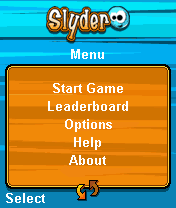
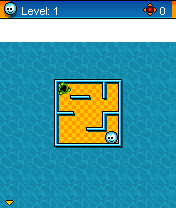
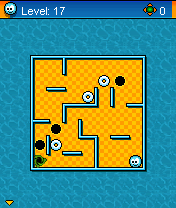
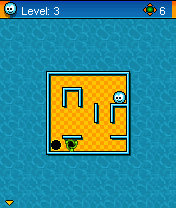
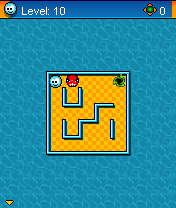



Reviews
There are no reviews yet.